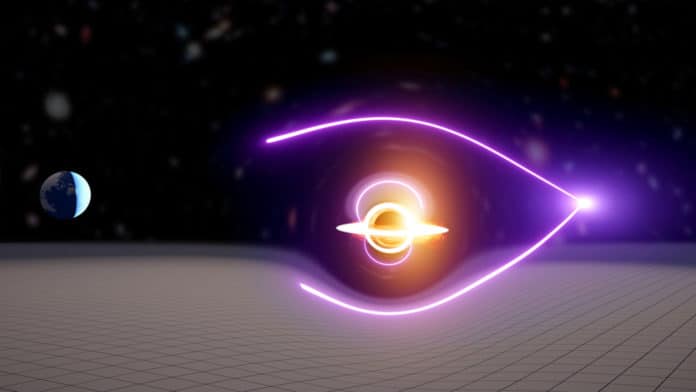Short gamma-ray bursts, extremely bright bursts of high-energy light that left a mysterious material. That mysterious material is a prolonged ‘afterglow’ of radiation, including X-rays.
For years, scientists have been exploring the origin of this afterglow, yet they don’t know where this afterglow comes from.
In a recent study, scientists investigated a simple model that proposes a rotating neutron star as the engine behind a type of lengthy X-ray afterglows, known as X-ray plateaux. Using a sample of six short gamma-ray bursts with an X-ray plateau, scientists worked out the properties of the central neutron star and the mysterious remnant surrounding it.
Scientists developed the model by taking inspiration from remnants from a young supernova. There is a huge difference between remnants from supernovae and short gamma-ray-bursts, but the energy driving from a rotating neutron star has the same underlying physics. So, if the remnant of a short gamma-ray burst is a neutron star, it must have a similar energy outflow as a supernova remnant.
Scientists borrowed fundamental physics from previous short gamma-ray burst models. They wanted to predict the brightness and duration of the X-ray plateau.
For each short gamma-ray burst, the results suggested that the remnant neutron star is a millisecond magnetar: a neutron star with a potent magnetic field.
All known magnetars have a very slow rotation frequency; similarly, all observed neutron stars with millisecond spins have weak magnetic fields. This observation gap isn’t surprising because the star’s magnetic field converts the rotational energy into electromagnetic energy. For a magnetar-strength field, this process happens on a scale from seconds to days – precisely the duration of most X-ray plateaux.
The research is the first attempt at estimating the source of X-ray afterglows using this kind of model. With more data, scientists will be able to make stronger conclusions about the origin of X-ray plateaux and, if we’re lucky, discover what these mysterious remnants are.
Journal Reference:
- Inferring properties of neutron stars born in short gamma-ray bursts with a plerion-like X-ray plateau” by L. C. Strang, A. Melatos, N. Sarin and P. D. Lasky, 4 August 2021, Monthly Notices of the Royal Astronomical Society. DOI: 10.1093/mnras/stab2210
